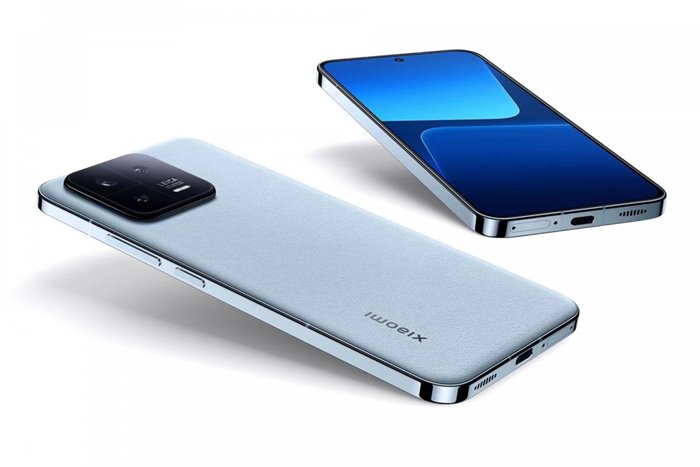Comparison Of Specifications Of Xiaomi 13 And 13 Pro With Competitors
Finally, The Xiaomi 13 Was Unveiled After The Delay, And Now It Has The Opportunity To Be Compared With Other Competitors, Including iPhone 14, Galaxy S22 Plus, And Pixel 7.
As always, Xiaomi is busy introducing the successor to the Xiaomi 12 and Xiaomi 12 Pro series. Finally, after a few days’ delay in holding the Xiaomi event to raise the flagship phones of this Chinese company’s new series, we saw the unveiling of the Xiaomi 13 phone. As always, the Xiaomi 13 phone will be released first in the Chinese market, and shortly after, it will be released globally.
Before the unveiling of Xiaomi 13, many official and unofficial news were published about the features of this phone. Finally, with all the noise and promises of Xiaomi, we faced this company’s new series of flagships.
However, Xiaomi has become one of the best-selling smartphone brands in a few years and challenges its competitors in an unfair game. In the following, we will compare the features and facilities of Xiaomi 13 and 13 Pro with iPhone 14 and 14 Pro, Samsung Galaxy S22 Plus, Google Pixel 7 and 7 Pro, and Huawei Mate 50 to choose the best option for your needs. Select to buy.
Display
The screen of the standard model of the new Xiaomi flagship has 13 AMOLED panels and a size of 6.36 inches. Meanwhile, the Pro model has a larger AMOLED E5 screen with a length of 73.6 inches and an explanation of 3,200 x 1,440 pixels, which will be suitable for users who want to watch movies or play games with their smartphones. The screen resolution of Xiaomi 13 is 2,400 x 1,080 pixels.
The maximum refresh rate of the display panel of the new flagships Xiaomi 13 and 13 Pro is 120 Hz, and the total brightness provided by their screens in normal mode is 1,200 nits and 1,000 to 1,500 nits respectively for Xiaomi 13 and 13 Pro. ; Of course, this amount can reach up to 1,900 nits when playing HDR content.
Like the previous generation, the difference between the Xiaomi 13 Pro display and the standard model lies in the LTPO feature, which allows for flexible refresh rate adjustment in the range of 1 to 120 Hz. Also, the difference between the panels of these two phones can be seen in the pixel density, measured as 419 and 521 pixels per inch for the Xiaomi 13 and 13 Pro models, respectively. Another capability of the Xiaomi 13 and 13 Pro display panel will include support for the HDR10+ standard and its high resistance thanks to a layer of Victus Gorilla Glass.
Meanwhile, the iPhone 14 has an old panel with a size of 1.6 inches and a pixel density of 460 and offers a resolution of 2,532 x 1,170; But the refresh rate of the display panel of this phone still does not exceed 60 Hz. The maximum brightness of the iPhone 14 display is between 800 nits and 1,200 nits, But in Zoomit’s review, we reached 1275 nits while playing HDR visual content.
Ceramic Shield is responsible for protecting the front panel against impacts.
In comparing Xiaomi 13 Pro with iPhone 14 Pro, the first thing that attracts attention is the display panel size. iPhone 14 Pro is not different from the basic version of iPhone 14 in terms of dimensions, But its maximum brightness and 120Hz refresh rate weigh heavily on the bottom of the scale. The whole intellect of the iPhone 14 Pro, mentioned many times at the Xiaomi event, reaches 2000 nits when playing HDR10 video content.
On the other hand, the Galaxy S22 Plus display panel size is 6.6 inches, with a resolution of 2,340 x 1,080, and with a pixel density of 393, it will have a lower density than the Xiaomi 13. The maximum brightness of the Galaxy S22 Plus screen reach 1,750 nits and has a refresh rate of 120 Hz. This panel owes its resistance to the protective layer of the Victus+ defect gorilla.
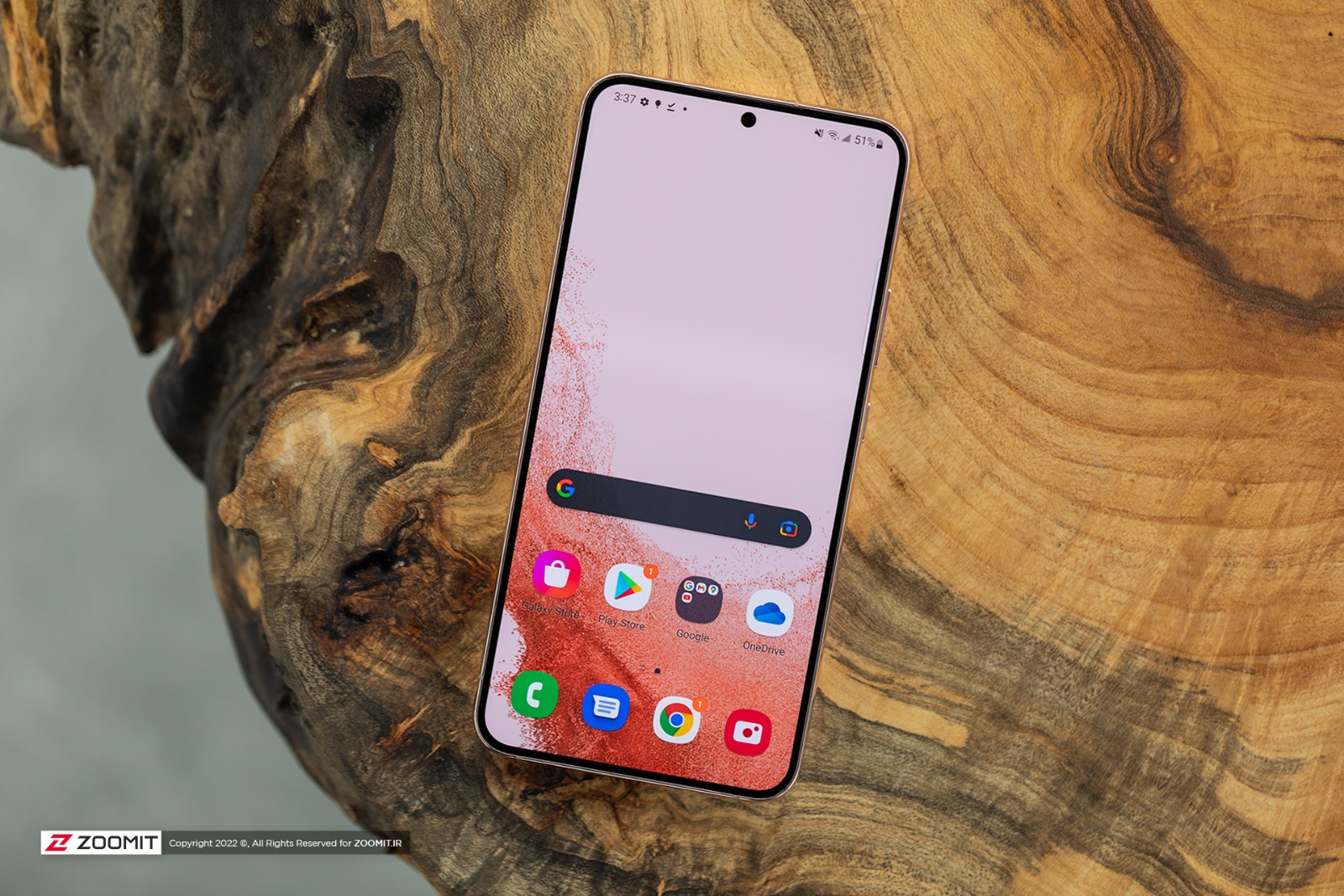
The other competitor of Xiaomi 13, the Huawei Mate 50, a local competitor of Xiaomi, has a 6.7-inch old-type panel that offers a resolution of 2,700 x 1,224 with a pixel density of 442; Also, the screen refresh rate of this phone is 90 Hz.
On the other hand, the Google Pixel 7 is available with a 3.6-inch display with a density of 417 pixels and displays visual content with a resolution of 2,400 x 1,080 pixels. The refresh rate of this panel is 90 Hz, offering 1,000 to 1,400 nits of brightness. Like the Xiaomi 13, the Pixel 7 is protected by Victus Gorilla Glass.
The Pixel 7 Pro has a 6.7-inch LTPO panel with a resolution of 1,440p and a refresh rate of 120 Hz. The maximum brightness of this display has increased by 2% compared to its previous generation and now reaches 1,400 nits; Therefore, it is easier to see in open environments, and the texts are more readable.
Camera
The Xiaomi 13 has a triple camera on the back. Its primary camera has a 50-megapixel sensor, and the second camera is equipped with a 10-megapixel sensor with a Leica telephoto lens, which allows for 3x optical zoom. The ultra-wide camera of this series also has a 12-megapixel sensor that does not have autofocus.
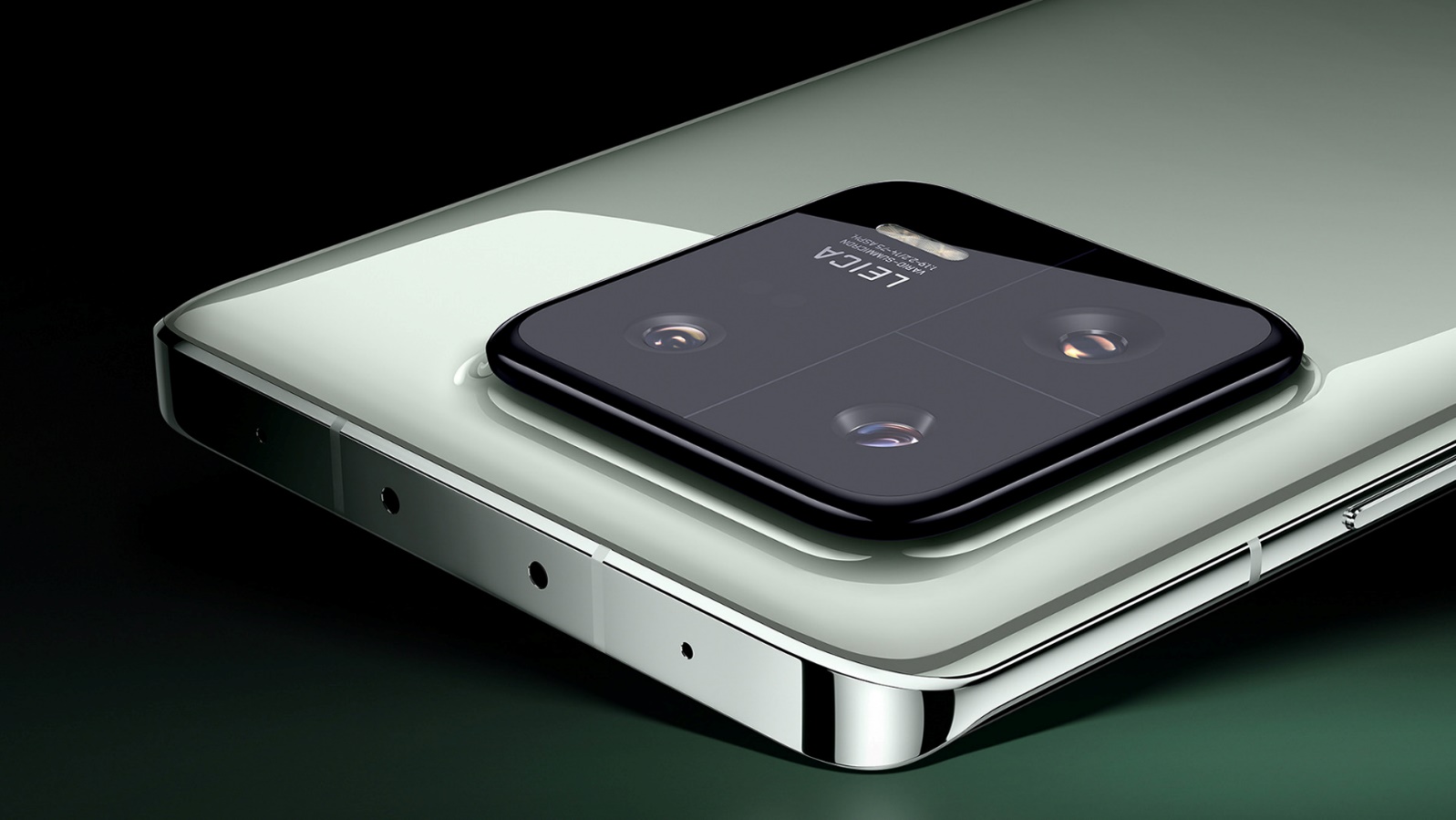
The camera of Xiaomi 13 Pro is also triple, and the 50-megapixel sensor of the primary camera is Sony IM989, which provides Hyper OIS for stabilization like the standard model. Also, Xiaomi 13 Pro has a telephoto camera with a 50-megapixel sensor that uses a lens with a floating element. In addition, the ultra-wide camera on this phone has a 50-megapixel sensor that also allows macro photography.
The selfie camera in both Xiaomi 13 and 13 Pro models is the same and consists of a 32-megapixel sensor with a wide lens that allows the user to record 1080p video.
On the other hand, the iPhone 14 has a dual camera on the back, and both cameras have 12-megapixel sensors, one of which has a wide lens and the other has an ultra-wide lens. Among the essential features of this camera is Cinematic Mode, which can be attractive for video content producers. The selfie camera of this phone is also 12 megapixels wide, which enables depth detection and biometrics, and can record videos with 4K quality and frame rates of 24, 25, 30, and 60 frames per second.
One of the camera’s essential features is the large size of the sensors. However, the iPhone 14 Pro, like the Xiaomi 13 Pro, has a triple camera consisting of three 12-megapixel sensors that have broad, ultra-wide, and telephoto lenses, respectively, and are accompanied by a TOF 3D LiDAR depth detection sensor and the possibility of recording 4K quality videos with frame rates of 24, 25, provides 30 and 60. The telephoto camera lens is also equipped with OIS stabilization and uses autofocus to capture macro images.
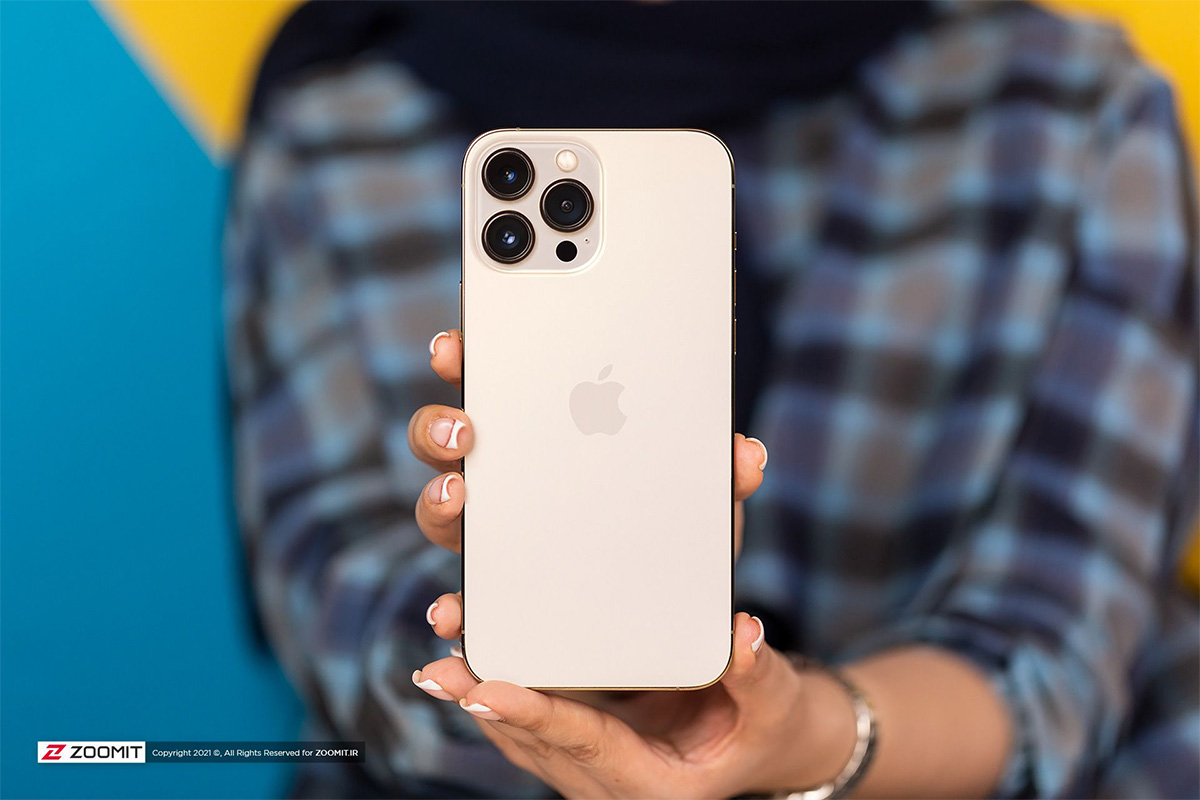
The selfie camera of the iPhone 14 Pro also has a 12-megapixel sensor with a wide lens, which can also be effective as a biometric sensor in addition to depth detection. For this reason, both iPhone 14 and 14 Pro do not have a fingerprint sensor and protect user information through Face ID or PIN code.
However, even though mathematically, 12 is much smaller than 50, the camera of the iPhone 14 Pro or even iPhone 14 provides excellent video quality due to the reliance on the processor. Therefore, we have to wait and put the camera of Xiaomi 13 and 13 Pro in the testing crucible to see how the camera performance of these Xiaomi flagship phones is.
The Korean competitor of the Xiaomi 13 series, Samsung Galaxy S22 Plus, also has a triple camera with a 50-megapixel sensor as the primary camera with a wide lens, an ultra-wide camera with a 12-megapixel sensor and 120-degree coverage, and a telephoto camera with a 10-megapixel sensor equipped with image stabilization and the ability The optical zoom is three times, which, like the Xiaomi 13 and 13 Pro cameras, provides the possibility of 8K quality imaging with a frame rate of 24 frames per second. The selfie camera of this phone is 10 megapixels with a wide lens and records videos in 4K quality.
Huawei Mate 50 camera can zoom 100 times.
Huawei Mate 50 offers exciting features in the field of cameras. This phone, which can be seen on the rear frame of the triple camera set, has a 50-megapixel sensor equipped with an RYYB color filter and autofocus, which is known as the primary camera and is accompanied by a 13-megapixel camera with an ultra-wide lens and a 12-megapixel camera with a periscopic telephoto lens. And provides the possibility of 100 times magnification; Of course, the optical zoom of this camera offers 5x magnification.
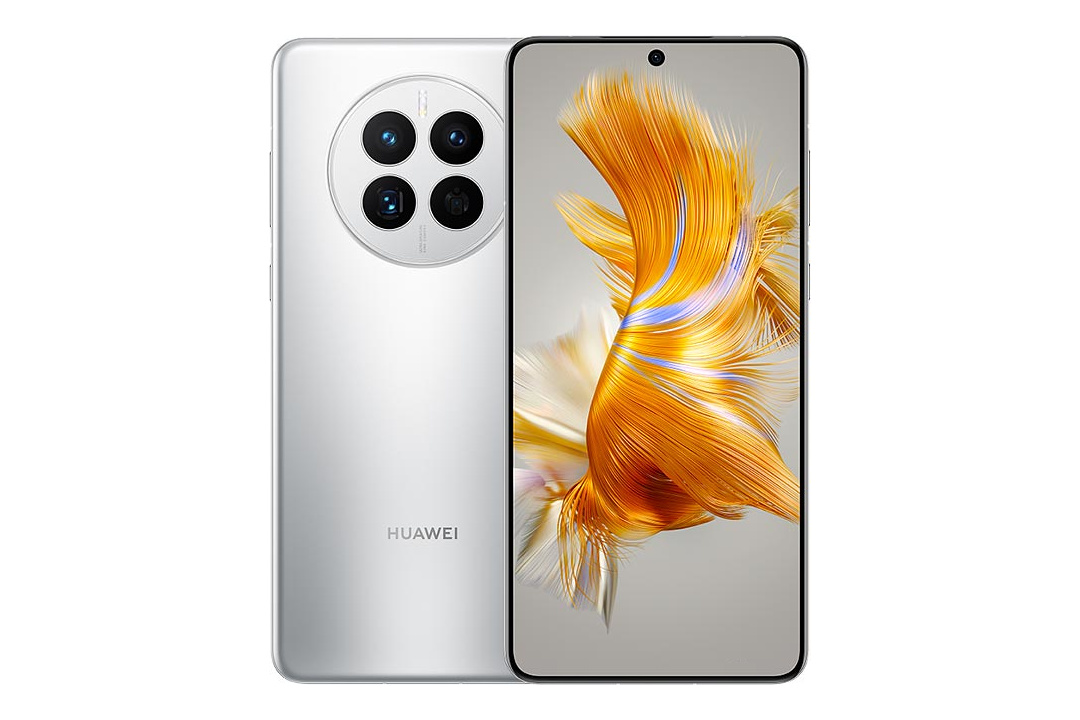
Unlike Xiaomi 13 and Xiaomi 13 Pro, Huawei Mate 50 supports 4K quality imaging at 30 and 60 frame rates. The selfie camera of this phone has a 13-megapixel sensor with an ultra-wide lens that can capture images in 4K quality, like the rear camera.
The primary camera of the Pixel 7 and Pixel 7 Pro has a 50-megapixel sensor like the previous generation. In contrast, the Pixel 7 Pro has two other cameras, including a 12-megapixel ultra-wide camera with 126-degree coverage and a 48-megapixel telephoto camera with 5x optical zoom and the ability to record macro images. The use of automatic focus accompanies it.
The possibility of shooting 4K quality videos in both Google Pixel models’ primary and selfie cameras is available to the user. The primary camera of the Pixel 7, however, only comes with a 12-megapixel ultra-wide camera with 114-degree coverage. The selfie camera in both the regular and Pro Pixel 7 phones has a 10.8-megapixel sensor with an ultra-wide lens. However, the difference between the primary and selfie cameras in imaging can be seen in support of frame rates of 120 and 240 frames per second in 1080p quality.
Performance and battery
Xiaomi 13 and 13 Pro phones, after a media frenzy and a sudden delay and with direct references to the iPhone during the event, have finally been introduced equipped with the most powerful current chip on the Android platform, Snapdragon 8 Gen 2. This chip has eight cores in its CPU unit, which consists of a Cortex-X3 body with a frequency of 19.3 GHz, two A715 cores and two A710 cores with a frequency of 2.8 GHz to support old applications, and three low-power A510 cores with a frequency of 2 GHz.
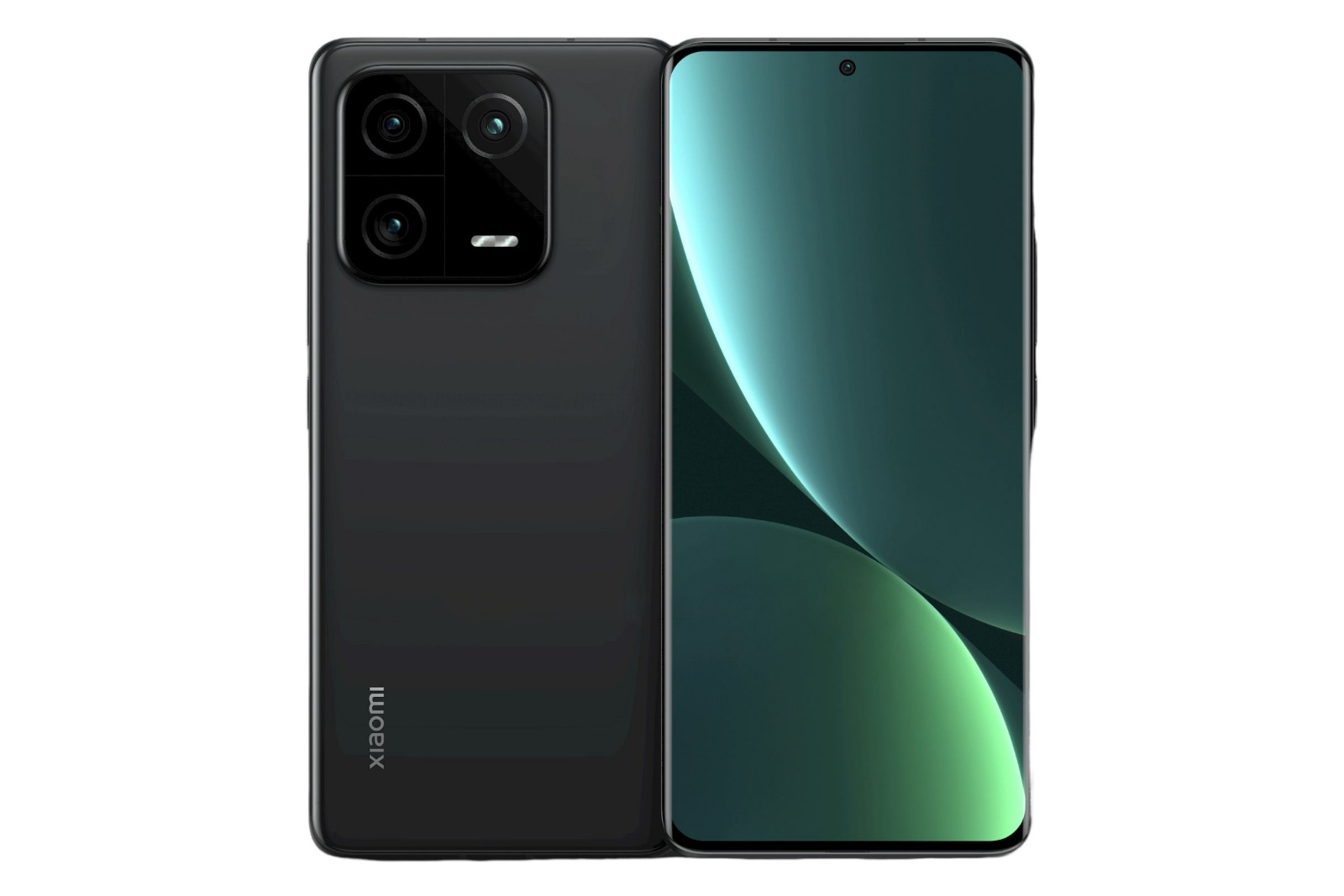
Xiaomi had previously claimed that the Snapdragon 8 generation 2 chip would appear more powerful than Apple’s A16 chip. Still, this matter needs to be examined by an expert and cannot be relied upon. However, according to Qualcomm, Snapdragon 8 generation two is 35% more powerful than its previous generation and has up to 40% more efficient energy consumption. Xiaomi 13 and 13 Pro phones will be launched with 8 or 12 GB RAM configuration and 128 and 256 GB storage memory and 512 GB version in Xiaomi 13 Pro.
The CPU unit of the A16 chip is faster than Snapdragon 8 generation 2 based on benchmarks.
However, compared to the chip used in the iPhone 14 and 14 Pro, we cannot hope that Xiaomi’s claim will come true. iPhone 14 and 14 Pro are equipped with Apple’s exclusive A16 Bionic chip. This chip includes six cores in its CPU unit; two strong Everest roots with a frequency of 3.46 GHz for heavy processing and four low-consumption Sawtooth centers with a frequency of 2.02 GHz are used for standard processing.
According to Apple, the A15 chip hosted 15 billion transistors, which was 27% more than the number of transistors in A14, and the number of transistors in the A16 chip increased by only 6% with 16 billion transistors. On the other hand, without considering the numbers, according to the results obtained from the GeekBench 5 benchmark, Apple’s A16 chip surpasses the Snapdragon 8 generation 2 by a large margin, and these results show that Xiaomi did not make false claims.
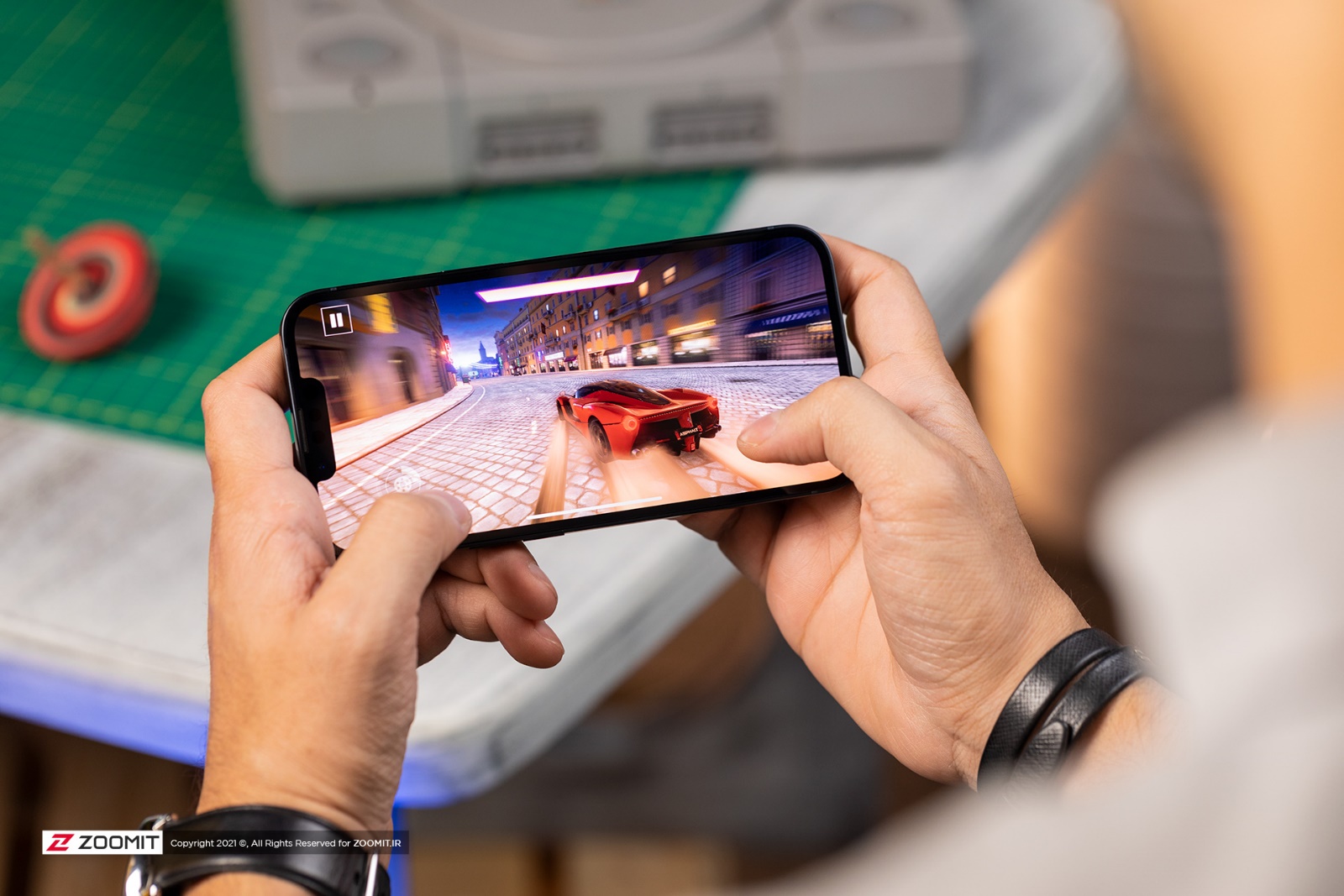
According to these results, even the A15 chip in the iPhone 13 and 13 Pro was faster than the second-generation Snapdragon 8 in single-core performance, although by a shorter distance. In addition, compared to the old A14 chip, the results are not promising, and Apple still leads in single-core performance. However, the Snapdragon 8 generation 2 chip’s multi-core performance appears better than the two A15 and A14 chips. Of course, the graphics processing unit of the Snapdragon 8 generation 2 chip shows its superiority by far, according to the 3D Mark benchmark.
The amount of RAM considered for iPhone 14 and 14 Pro is 6 GB, and can be provided with 128, 256, or 512 GB of storage memory; Of course, the iPhone 14 Pro model is also available with a storage memory of 1 TB.
The Korean rival of Xiaomi 13, Samsung Galaxy S22 Plus, on the other side of the field, is equipped with the Exynos 2200 or Snapdragon 8 generation 1 chip; both of these processors had problems such as performance instability and high heat generation due to the production based on Samsung’s 4 nm technology.
According to the results of Geekbench 5, there is a big difference in the performance speed of Snapdragon 8 generation 2 compared to the Exynos 2200 chip. Snapdragon 8 generation 2 appears to be 45% faster than Exynos 2200 in multi-core performance, and the difference in graphics processing is 60%. In addition, without a doubt, the second generation Snapdragon 8 chip should perform better than the first generation; Therefore, it can be said that the Xiaomi flagship currently has a relative advantage over the Galaxy S22 Plus.
Galaxy S22 Plus offers customers 8 GB of RAM and 128 or 256 GB of storage; the lack of a version with 12 GB of RAM compared to Xiaomi 13 puts it behind the competition.
The Huawei Mate 50 phone can have close competition with the Xiaomi 13 and 13 Pro due to the similarity of the chip. The Snapdragon 8 Plus generation 1 chip in Huawei Mate, like the Snapdragon 8 generation 2 chip, is designed based on TSMC lithography. Both chips have eight cores in the CPU unit, and the slight difference in the type of cores and how they are arranged affects the benchmark results.
The chip used in the Mate 50 has a Cortex-X2 core with a frequency of 3.19 GHz, three A710 cores with a frequency of 2.75 Hz, and four low-power Cortex A510 cores with a frequency of 2.0 GHz are also present in the processor unit. Other advantages of Snapdragon 8 generation 2 include Adreno 740 graphics processor and Wi-Fi 7 and…
Huawei Mate 50 comes with 8GB of RAM and 128GB, 256GB, and 512GB of storage, which can be expanded up to 256GB using a second SIM card slot and Nano Memory.
![]()
In terms of processing, Google Pixel 7 and 7 Pro rely on the company’s exclusive Tensor G2 chip, which has nothing to say on paper compared to Snapdragon 8 generation 2. With a glance at the obtained benchmarks, you can see the vast difference between these two processors even with your eyes closed.
The Google Tensor G2 processor has two Cortex X1 cores with a frequency of 2.85 GHz, two Cortex A76 cores with a frequency of 2.35 GHz, and four Cortex A55 cores with a frequency of 1.80 GHz in its CPU unit.
But, the critical issue is the difference in design policy between the two companies, Xiaomi and Google. Google believes that there should be “software solutions for hardware problems”; So, unlike Xiaomi, which is looking for the most numbers on paper, Google is trying to offer the most innovative smartphone.
However, the Pixel 7 phone is available with 8 RAM and 128 and 256 GB storage, and the Pixel 7 Pro is available with 12 RAM and 128, 256, and 512 GB storage; But it is not possible to increase the memory with the help of the memory port in these phones.
The battery used in the Xiaomi phone 13 has a capacity of 4,500 mAh and supports 67W fast charging. This phone’s maximum wireless charging power will be 50 watts, which can charge 100% in less than an hour. In addition, it also offers 10W reverse charging. The Xiaomi 13 Pro, however, is equipped with a 4820 mAh battery that supports a maximum charging power of 120 watts due to its more prominent design. In wireless mode, like the standard model, its influence reaches 50 watts, But due to the larger capacity of the battery, charging it 100% wirelessly will need more time.
The iPhone 14 battery, on the other hand, has a capacity of 3,279 mAh and offers 20-watt charging power.
Despite its small capacity compared to other phones, it has a good charging time due to the optimizations. For example, one of the most important optimizations is using a 60 Hz refresh rate panel in the display. The wireless charging power of this phone is also stated to be 15 watts. However, the iPhone 14 Pro, with a slight increase in weight and, of course, the exact dimensions as the iPhone 14, has a 3,200 mAh battery that provides 20 watts of power in wireless mode and 15 watts of power in wireless mode.
Like most Android competitors, the Galaxy S22 Plus has a good battery capacity that reaches 4,500 mAh and supports 45W power in wired mode and 15W in wireless mode. However, the Huawei Mate 50 phone, with a small distance, has a battery capacity of 4460 mAh with a power of 66 watts in wired charging mode and 50 watts in wireless charging mode.
The Pixel 7 phone has a battery capacity of 4,355 mAh and a power of 30 watts and 20 watts, respectively; wired and wireless charging modes can charge up to 50% in 30 minutes. Due to its larger body, Pixel 7 Pro has a 5,000 mAh battery that can charge 30 watts and 23 watts in wired and wireless modes.
Fortunately, all the phones in this comparison support the fifth generation of the communication network (G5), except for the Huawei Mate 50, which has lost this vital feature due to the use of the Snapdragon 8 Gen 1 4G chip.
Price
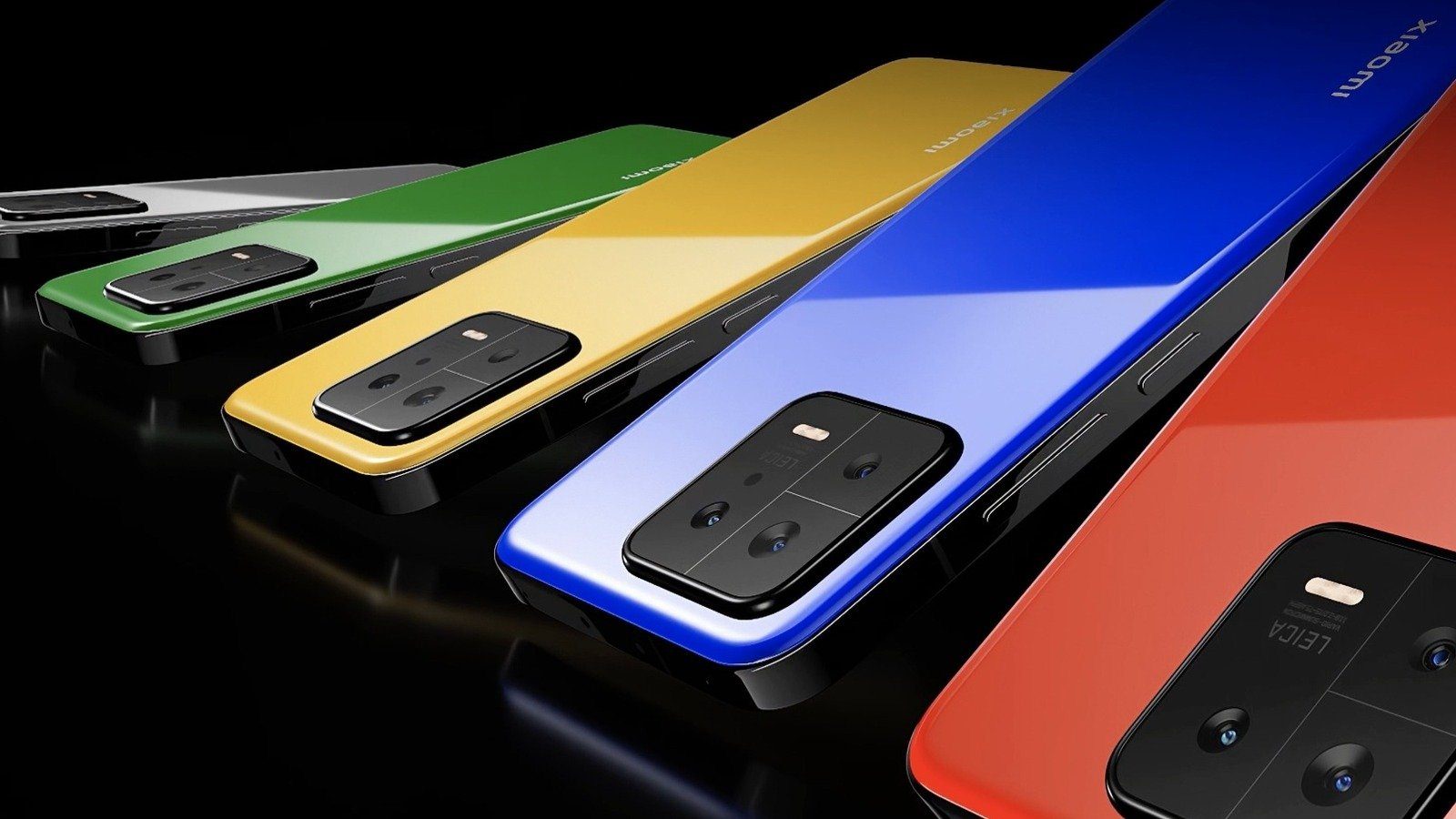
The phone’s price is undoubtedly one of the most crucial selection and purchase criteria for customers. No matter how many features a device has, what ultimately makes us choose one smartphone over another is the price, whether we think it’s worth buying or not—for example, the $300 gap between the two regular Pixel 7 models.
And the Pro is too much and doesn’t make much sense compared to the features offered in the Pixel 7 Pro. Xiaomi always offers phones with many features at the lowest price, which can be considered partly due to marketing issues and primarily due to the lack of research and development costs.
Xiaomi 13 and 13 Pro phones are not excluded from this and are available at reasonable prices compared to other competitors. Of course, these prices are based on the Chinese market, and the cost of the product at the time of global release has not yet been determined.
| Smartphone | Xiaomi 13 | Xiaomi 13 Pro | iPhone 14 | iPhone 14 Pro | Samsung Galaxy S22 Plus | Huawei Mate 50 | Pixel 7 | Pixel 7 Pro |
|---|---|---|---|---|---|---|---|---|
| Price | From about $580 | From about $730 | From $799 | From $999 | From $999 | From $760 | From $599 | From $899 |
Conclusion
The Xiaomi 13 and 13 Pro phones easily defeat the competitors by using the flagship processor on the Android platform. Still, according to the benchmark results, this phone cannot compete with the iPhone 14 and 14 Pro. However, apart from the processor, one of the most significant improvements of Xiaomi 13 and 13 Pro compared to the previous generation is receiving the IP68 standard certificate, which is an essential achievement for Xiaomi.
Finally, the final decision to buy the best mobile phones in the Iranian market depends on the customer’s needs; Therefore, with all the numbers and knowledge you have about technologies, you should buy the required smartphone according to your needs and budget. In this comparison, we can conclude that Xiaomi 13 and 13 Pro are currently worth buying more than other Android competitors.
| Comparison | Xiaomi 13 | Xiaomi 13 Pro | Apple iPhone 14 | Apple iPhone 14 Pro | Samsung Galaxy S22 Plus 5G | Mate 50 Huawei | Google Pixel 7 | Google Pixel 7 Pro |
|---|---|---|---|---|---|---|---|---|
| Communications and sensors | ||||||||
| Sensors | Fingerprint sensor, accelerometer, gyroscope, compass, color spectrum sensor | Fingerprint sensor, accelerometer, gyroscope, compass, barometer, color spectrum sensor | 3D facial recognition sensor, accelerometer, gyroscope, proximity sensor, ambient light sensor, compass | 3D facial recognition sensor, accelerometer, gyroscope, proximity sensor, ambient light sensor, compass | Fingerprint sensor, accelerometer, gyroscope, proximity sensor, compass, barometer | Accelerometer, gyroscope, proximity sensor, barometer, compass, color spectrum sensor, fingerprint sensor | Fingerprint sensor, accelerometer, gyroscope, proximity sensor, compass, barometer, ambient light sensor | Accelerometer, gyroscope, proximity sensor, compass, barometer, fingerprint sensor |
| Type of fingerprint sensor | under the display (optical) | under the display (visual) | under display (ultrasonic) | under the display (optical) | under the display (optical) | under the display (optical) | ||
| Wi-Fi | Wi-Fi 6E (802.11ax) a/b/g/n/ac/ax | Wi-Fi 6E (802.11ax) a/b/g/n/ac/ax | Wi-Fi 6 (802.11ax) a/b/g/n/ac/ax | Wi-Fi 6 (802.11ax) a/b/g/n/ac/ax | Wi-Fi 6E (802.11ax) a/b/g/n/ac/ax | Wi-Fi 6 (802.11ax) a/b/g/n/ac/ax | Wi-Fi 6E (802.11ax) a/b/g/n/ac/ax | Wi-Fi 6E (802.11ax) a/b/g/n/ac/ax |
| Description of Wi-Fi | Dual Band Wi-Fi Direct | Dual Band Wi-Fi Direct | Dual Band Wi-Fi Hotspot | Dual Band Wi-Fi Hotspot | Dual Band, Wi-Fi Direct, Wi-Fi Hotspot | Dual Band, Wi-Fi Direct, Wi-Fi Hotspot | Tri-Band, Wi-Fi Direct, Wi-Fi Hotspot | Tri-Band, Wi-Fi Direct, Wi-Fi Hotspot |
| Bluetooth | Yes, unknown version | Yes, unknown version | 5.3 | 5.3 | 5.2 | 5.2 | 5.2 | 5.2 |
| Bluetooth Description | Support for A2DP of low power type or LE | Support for A2DP of common power type or LE | Support for A2DP of common power type or LE | Support for A2DP of common power type or LE | Support for A2DPR of low power type or LE support for aptX HD | A2DP support of common power type or LE support of aptX HD | ||
| Communication technology | GSM / CDMA / HSPA / EVDO / LTE / 5G | GSM / CDMA / HSPA / EVDO / LTE / 5G | GSM / CDMA / HSPA / EVDO / LTE / 5G | GSM / CDMA / HSPA / EVDO / LTE / 5G | GSM / CDMA / HSPA / EVDO / LTE / 5G | GSM / CDMA / HSPA / CDMA2000 / LTE | GSM / CDMA / HSPA / EVDO / LTE / 5G | GSM / CDMA / HSPA / EVDO / LTE / 5G |
| 5G support | ||||||||
| SIM card | Two dual standby SIM cards (Nano-SIM) | Two dual standby SIM cards (Nano-SIM) | Single SIM card (Nano-SIM or eSIM) Dual SIM card dual standby (Nano-SIM) | Single SIM card (Nano-SIM or eSIM) Dual SIM card dual standby (Nano-SIM) | Single SIM card (nano-SIM) dual SIM card dual standby (2 nano SIM + eSIM) | Single SIM card (Nano-SIM) Dual SIM card dual standby (Nano-SIM) | Single SIM card (Nano-SIM or eSIM) | Single SIM card (Nano-SIM or eSIM) |
| Navigation and GPS | GPS/A-GPS/GLONASS/GALILEO/BDS/QZSS/NavIC | GPS/A-GPS/GLONASS/GALILEO/BDS/QZSS/NavIC | GPS/A-GPS/GLONASS/GALILEO/BDS/QZSS | GPS plus A-GPS/GLONASS/GALILEO/BDS/QZSS – dual-band | GPS/A-GPS/GLONASS/GALILEO/BDS | GPS/A-GPS plus GLONASS/GALILEO/BDS/QZSS/NavIC – up to three bands | GPS plus A-GPS/GLONASS/GALILEO/BDS/QZSS – dual-band | GPS plus A-GPS/GLONASS/GALILEO/BDS/QZSS – dual-band |
Basic Information |
||||||||
| Model numbers of this product | A2882 (Global) A2649 (USA) A2881 (Canada and Japan) A2884 (China and Hong Kong) A2884 (Russia) | A2890 (Global) A2650 (USA) A2889 (Canada and Japan) A2892 (China and Hong Kong) A2891 (Russia) | SM-S906B | SM-S906B/DS (Global) SM-S906E (Asia, Africa) | CET-AL00, CET-LX9 | GVU6C GQML3 | GP4BC GE2AE | ||
| Approximate price at the time of release | About 800 dollars | About 1000 dollars | About 1000 dollars | About 720 euros | About 650 euros | About 900 euros | ||
| Announced | December 11, 2022 | December 11, 2022 | September 7, 2022 | September 7, 2022 | February 9, 2022 | September 6, 2021 | October 6, 2022 | October 6, 2022 |
| Supply status | Coming soon | Coming soon | offered | offered | offered | Coming soon | offered | Coming soon |
| Release date | December 2022 | December 2022 | September 16, 2022 | September 16, 2022 | February 25, 2022 | September 28, 2021 | October 13, 2022 | October 13, 2022 |
| Specific Absorption Rate (SAR) | 1.19 W/kg (head), 1.08 W/kg (body) | |||||||
| Special European absorption rate (SAR EU) | 0.57 W/kg (head), 1.40 W/kg (body) | |||||||
| Operating system type | Android | Android | iOS | iOS | Android | Android | Android | Android |
| Operating system at the time of release | Android 13 | Android 13 | iOS 16 | iOS 16 | Android 12 | HarmonyOS 3.0 | Android 13 | Android 13 |
| Description of the operating system | It comes with MIUI 14 UI | It comes with MIUI 14 UI | Comes with One UI 4.1 interface | Available with EMUI 13 user interface (global market) | ||||
| Battery and charging | ||||||||
| Battery capacity | 4500 mAh | 4820 mAh | 3279 mAh | 3200 mAh | 4500 mAh | 4460 mAh | 4355 mAh | 5000 mAh |
| Battery capacity class | 4000 to 5000 mAh | 4000 to 5000 mAh | 3000 to 4000 mAh | 3000 to 4000 mAh | 4000 to 5000 mAh | 4000 to 5000 mAh | 4000 to 5000 mAh | 5000 mAh and more |
| Battery type | Lithium polymer | Lithium polymer | Lithium-ion | Lithium-ion | Lithium-ion | Lithium polymer | Lithium-ion | Lithium-ion |
| Replaceable battery | Not replaceable by the user | Not replaceable by the user | Not replaceable by the user | Not replaceable by the user | Not replaceable by the user | Not replaceable by the user | Not replaceable by the user | Not replaceable by the user |
| Maximum supported charging power | 67 mouths | 120 mouths | 45 mouths | 66 mouths | 30 mouths | 30 mouths | ||
| Fast charging support | ||||||||
| Support wireless charging | ||||||||
| Maximum wireless charging power | 50 watts | 50 watts | 15 mouths | 15 mouths | 15 mouths | 50 watts | 20 mouths | 23 mouths |
| Time required for charging | 100% in 39 minutes (wired), 100% in 53 minutes (wireless) | 50% in 30 minutes | 50% in 30 minutes | 50% in 30 minutes | 50% in 30 minutes | |||
| Other charging and battery features | Support for Power Delivery technology 3 Support for Quick Charge technology four 10W reverse charge | 10W reverse charge, support for Power Delivery 3 technology, support for Quick Charge 4+ technology | Support for Power Delivery 2 technology, 7.5W Qi fast wireless charging, and 15W when using MagSafe | Support for Power Delivery 2 technology, 7.5W Qi fast wireless charging, and 15W when using MagSafe | Support for Qi and PMA wireless charging technology, 4.5 W wireless reverse charging, support for Power Delivery 3 technology | 5W reverse charge | Support for Power Delivery 3 technology, support for reverse charging | Support for Power Delivery 3 technology, support for reverse charging |
| Connection port | USB Type-C 2.0 | USB Type-C 2.0 | Lightning USB 2.0 | Lightning USB 2.0 | USB Type-C 3.2 | USB Type-C 3.1 | USB Type-C 3.2 | USB Type-C 3.2 |
| Support OTG | ||||||||
| Other specifications of the port | DisplayPort 1.2 support | |||||||
chip |
||||||||
| Chip model | Qualcomm SM8550 Snapdragon 8 Gen 2 | Qualcomm SM8550 Snapdragon 8 Gen 2 | Apple A15 Bionic | Apple A16 Bionic | Exynos 2200 Qualcomm SM8450 Snapdragon 8 Gen 1 | Qualcomm SM8475 Snapdragon 8+ 4G Gen 1 | Google Tensor G2 | Google Tensor G2 |
| Chip manufacturing process | 4 nm | 4 nm | 5 nm | 4 nm | 4 nm | 4 nm | 4 nm | 4 nm |
| Number of processor cores | Eight cores | Eight cores | Six cores | Six cores | Eight cores | Eight cores | Eight cores | Eight cores |
| Characteristics of cores | 1 core 3.2 GHz Cortex-X3 and 2 cores 2.8 GHz Cortex-A715 and 2 cores 2.8 GHz Cortex-A710 and 3 cores 2.0 GHz Cortex-A510 | 1 core 3.2 GHz Cortex-X3 and 2 cores 2.8 GHz Cortex-A715 and 2 cores 2.8 GHz Cortex-A710 and 3 cores 2.0 GHz Cortex-A510 | 1 core 2.80 GHz Cortex-X2 and 3 cores 2.50 GHz Cortex-A710 and 4 cores 1.80 GHz Cortex-A510 1 core 3.00 GHz Cortex-X2 and 3 cores 2.40 GHz Cortex-A710 and 4 cores 1.70 GHz Cortex-A510 | 1 core 3.19 GHz Cortex-X2 and 3 cores 2.75 GHz Cortex-A710 and 4 cores 2.0 GHz Cortex-A510 | 2 cores 2.85 GHz Cortex-X1 and 2 cores 2.35 GHz Cortex-A78 and 4 cores 1.80 GHz Cortex-A55 | 2 cores 2.85 GHz Cortex-X1 and 2 cores 2.35 GHz Cortex-A76 and 4 cores 1.80 GHz Cortex-A55 | ||
| GPU | Adreno 740 | Adreno 740 | Apple GPU | Apple GPU | Xclipse 920 Adreno 730 | Adreno 730 | Mali-G710 MC10 | Mali-G710 MC10 |
| Other specifications of the chip | 5-core graphics processor | 5-core graphics processor | Exynos model for the European market, Snapdragon model for the global market | 10-core graphics processor | ||||
Memory and RAM |
||||||||
| Combination of internal memory and RAM | 128 GB / 8 GB RAM 256 GB / 8 GB RAM 256 GB / 12 GB RAM | 128 GB / 8 GB RAM 256 GB / 8 GB RAM 256 GB / 12 GB RAM 512 GB / 12 GB RAM | 128 GB / 6 GB RAM 256 GB / 6 GB RAM 512 GB / 6 GB RAM | 128 GB / 6 GB RAM 256 GB / 6 GB RAM 512 GB / 6 GB RAM 1 TB / 6 GB RAM | 128 GB / 8 GB RAM 256 GB / 8 GB RAM | 128 GB / 8 GB RAM 256 GB / 8 GB RAM 512 GB / 8 GB RAM | 128 GB / 8 GB RAM 256 GB / 8 GB RAM | 128 GB / 12 GB RAM 256 GB / 12 GB RAM 512 GB / 12 GB RAM |
| RAM | 8 GB RAM 12 GB RAM | 8 GB RAM 12 GB RAM | 6 GB of RAM | 6 GB of RAM | 8 GB of RAM | 8 GB of RAM | 8 GB of RAM | 12 GB of RAM |
| internal memory | 128 GB 256 GB | 128 GB 256 GB 512 GB | 128 GB 256 GB 512 GB | 128 GB 256 GB 512 GB 1 TB | 128 GB 256 GB | 128 GB 256 GB 512 GB | 128 GB 256 GB | 128 GB 256 GB 512 GB |
| Internal memory type | UFS 4.0 UFS 3.1 (128GB model) | UFS 4.0 UFS 3.1 (128GB model) | NVMe | NVMe | UFS 3.1 | UFS 3.1 | UFS 3.1 | UFS 3.1 |
| Memory card slot | ||||||||
| Type of memory card slot | Nano Memory (shared slot with the second SIM card) | |||||||
| Maximum supported memory card | 256 GB | |||||||
| Rear camera | ||||||||
| Rear camera configuration | Wide/standard ultrawide telephoto | Wide/standard ultrawide telephoto | Wide/standard ultrawide | Wide/Standard Ultra Wide Telephoto depth detection | Wide/standard ultrawide telephoto | Wide/traditional ultrawide telephoto periscope | Wide/standard ultrawide | Wide/standard ultrawide telephoto |
| Primary Camera – Wide/Standard | 50 megapixels | 50.3 megapixels | 12 megapixels | 48 megapixels | 50 megapixels | 50 megapixels | 50 megapixels | 50 megapixels |
| Main Camera Specifications – Wide/Standard | Wide autofocus lens with phase detection optical image stabilization 1/1.49 inch sensor size 1.0-micrometer pixel size 23 mm f/1.8 | Wide lens 23mm dual Pixel autofocus with phase detection laser autofocus visual image stabilization 1.0-inch sensor size 1.6 micrometers pixel size f/1.9 | 26 mm wide lens, 1.9-micrometer pixel size, dual pixel autofocus with phase detection visual image stabilization, f/1.5 shift sensor type | 24 mm wide lens 1.22-micrometer pixel size dual pixel autofocus with phase detection visual image stabilization f/1.8 shift sensor | 24 mm wide lens 1/1.56 inch sensor size 1.0-micrometer pixel size dual pixel autofocus with phase detection visual image stabilization f/1.8 | 24mm wide lens autofocus with phase detection laser autofocus, visual image stabilization, f/1.4 to f/4.0 | 25 mm wide lens multi-axis autofocus with phase detection laser autofocus visual image stabilization 1/1.31 inch sensor size 1.2 μm pixel size f/1.9 | 25 mm wide lens multi-axis autofocus with phase detection laser autofocus visual image stabilization 1/1.31 inch sensor size 1.2 μm pixel size f/1.9 |
| Ultrawide camera | 12 megapixels | 50 megapixels | 12 megapixels | 12 megapixels | 12 megapixels | 13 megapixels | 12 megapixels | 12 megapixels |
| Ultrawide camera specifications | Ultrawide lens 1/3.0 inch sensor size 1.12-micrometer pixel size 15 mm f/2.2 | 1/2.76 inch autofocus ultrawide lens with phase detection, sensor size 0.64 micrometers, pixel size 14 mm, f/2.2 | 13 mm ultra-wide lens, 120-degree f/2.4 coverage | 13 mm ultra-wide lens, 120-degree coverage, 1.4-micrometer pixel size, dual pixel autofocus with f/2.2 phase detection | 13 mm ultra-wide lens, 120-degree coverage, 1/2.55 inch, sensor size, 1.4 micrometers, pixel size, f/2.2 | 13 mm ultra-wide lens, 120-degree coverage, autofocus with f/2.2 phase detection | 114-degree ultra comprehensive lens coverage 1/2.9 inch sensor size 1.25 micrometers pixel size f/2.2 | 126-degree ultra-wide lens, autofocus, 1/2.93 inches, sensor size, 1.25 micrometers, pixel size, f/2.2 |
| Telephoto camera | 10 megapixels | 50 megapixels | 12 megapixels | 10 megapixels | 12 megapixels | 48 megapixels | ||
| Telephoto camera specifications | Telephoto autofocus lens with phase detection optical image stabilization Optical zoom image 3.2 x 1/3.94 inch Sensor size 1.0 µm Pixel size 75 mm f/2.0 | Phase detection autofocus telephoto lens Optical zoom 3.2 x 1/2.76 inch Sensor size 0.64 µm Pixel size 75 mm f/2.0 | 77 mm telephoto lens, autofocus, phase detection, optical image stabilization, 3x optical zoom, f/2.8 | 70mm telephoto lens 1/3.94 inch sensor size 1.0 µm pixel size autofocus with phase detection visual image stabilization 3x optical zoom f/2.4 | 5x 125mm f/3.4 optical zoom periscopic telephoto lens autofocus with phase detection visual image stabilization | 120mm telephoto lens, multi-axis autofocus, phase detection, optical image stabilization, optical zoom, 5x 1/2.55 inch, sensor size, 0.7 µm, pixel size, f/3.5 | ||
| Specifications of the depth detection camera | TOF 3D LiDAR sensor | |||||||
| The maximum video resolution of the rear camera | 8k | 8k | 4K | 4K | 8k | 4K | 4K | 4K |
| Video resolution and frame rate | 8K@24fps 4K@30/60fps 1080p@30/120/240/960fps 720p@1920fps | 8K@24fps 4K@30/60fps 1080p@30/120/240/960fps 720p@1920fps | 4K@24/25/30/60fps 1080p@25/30/60/120/240fps | 4K@24/25/30/60fps 1080p@25/30/60/120/240fps | 8K@24fps 4K@30/60fps 1080p@30/60/240fps 720p@960fps | 4K@30/60fps 1080p@30/60/120/240fps 1080p@960fps | 4K@30/60fps 1080p@30/60/120/240fps | 4K@30/60fps 1080p@30/60/120/240fps |
| Filming description | Electronic Image Stabilizer-Gyroscopic Videography HDR10+ HDR Videography | HDR10+ Videography HDR10 Videography Electronic Image Stabilizer-Gyroscopic | HDR video recording Dolby Vision HDR video recording up to 60 frames per second Cinematic mode Stereo sound recording | 10-bit HDR video recording, Dolby Vision HDR video recording up to 60 frames per second, ProRes capability, Cinematic mode, stereo sound recording | HDR10+ video recording, electronic image stabilization, gyroscope, stereo sound recording | Image-gyroscopic electronic stabilizer | Electronic Image Stabilizer-Gyroscopic Optical Image Stabilizer 10-bit HDR video recording | Electronic Image Stabilizer-Gyroscopic Optical Image Stabilizer 10-bit HDR video recording |
selfie camera |
||||||||
| Original selfie camera | 32 megapixels | 32 megapixels | 12 megapixels | 12 megapixels | 10 megapixels | 13 megapixels | 10.8 megapixels | 10.8 megapixels |
| Specifications of the primary selfie camera | Wide lens 26 mm 0.7 micrometer pixel size f/2.5 | Wide lens 26 mm 0.7 micrometer pixel size f/2.5 | Wide lens 23 mm 1/3.6 inch autofocus sensor size with f/1.9 phase detection | Wide lens 23 mm 1/3.6 inch autofocus sensor size with f/1.9 phase detection | 26 mm wide lens 1/3.24 inch sensor size 1.22-micrometer pixel size dual pixel autofocus with f/2.2 phase detection | 18mm f/2.4 ultrawide lens | Ultrawide lens 21 mm 1/3.1 inch sensor size 1.22-micrometer pixel size f/2.2 | Ultrawide lens 21 mm 1/3.1 inch sensor size 1.22 micrometer f/2.2 |
| Depth detection and identification camera | Depth detection and biometric SL 3D sensor | Depth detection and biometric SL 3D sensor | ||||||
| The maximum video resolution of the selfie camera | 1080p | 1080p | 4K | 4K | 4K | 4K | 4K | 4K |
| Selfie video resolution and frame rate | 1080p@30/60fps 720p@120fps | 1080p@30/60fps 720p@120fps | 4K@24/25/30/60fps 1080p@25/30/60/120fps | 4K@24/25/30/60fps 1080p@25/30/60/120fps | 4K@30/60fps 1080p@30fps | 4K@30/60fps 1080p@30/60/240fps | 4K@30/60fps 1080p@30/60fps | 4K@30/60fps 1080p@30/60fps |
| Description of selfie filming | HDR video recording | HDR10+ video recording | Image-gyroscopic electronic stabilizer | Image-gyroscopic electronic stabilizer | ||||
| Voice | ||||||||
| Speaker type | stereo (dual) | stereo (dual) | stereo (dual) | stereo (dual) | stereo (dual) | stereo (dual) | stereo (dual) | stereo (dual) |
| 3.5 mm jack | ||||||||
| Audio features | 24-bit / 192 kHz audio | 24-bit / 192 kHz audio | 32-bit / 384kHz audio | 32-bit / 384kHz audio | ||||
| Designing | ||||||||
| Dimensions | 8 or 8.1 mm thick | 8.4 or 8.7 mm thick | 146.7 x 71.5 x 7.8 mm | 147.5 x 71.5 x 7.9 mm | 157.4 x 75.8 x 7.6 mm | 161.5 x 76.1 x 8 mm | 155.6 x 73.2 x 8.7 mm | 162.9 x 76.6 x 8.9 mm |
| Weight | 185 or 189 grams | 210 or 229 grams | 172 grams | 206 grams | 195 grams | 202 grams | 197 grams | 212 grams |
| back material | Glass | Glass | Glass-ceramic shield | Glass-ceramic shield | Glass – Gorilla Glass + Victus | Glass – Gorilla Glass Victus | Glass – Gorilla Glass Victus | |
| front material | Glass – Gorilla Glass Victus | Glass – Gorilla Glass Victus | Glass-ceramic shield | Glass-ceramic shield | Glass – Gorilla Glass + Victus | Glass – Kunlun Huawei | Glass – Gorilla Glass Victus | Glass – Gorilla Glass Victus |
| frame material | Metal – aluminum | Metal – aluminum | Metal – stainless steel | Metal – stainless steel | Metal – aluminum | Metal – aluminum | Metal – aluminum | |
| Color | Black, white, light blue, dark blue, gray, green, mint green, red, yellow | Black, white, mint green, blue | Black, purple, blue, gold, red | Black, gold, silver, and purple | Black, white, pink, green, gray, blue, purple, cream | Black, silver, purple, orange | Black, green, light, white | black gray white |
| Display | ||||||||
| Display dimensions | 6.36 inches | 6.73 inches | 6.1 inches | 6.1 inches | 6.6 inches | 6.7 inches | 6.3 inches | 6.7 inches |
| Display type | AMOLED | LTPO AMOLED | Super Retina XDR OLED | LTPO Super Retina XDR OLED | Dynamic AMOLED 2X | OLED | AMOLED | LTPO AMOLED |
| Maximum refresh rate | 120 Hz | 120 Hz | 60 Hz | 120 Hz | 120 Hz | 90 Hz | 90 Hz | 120 Hz |
| resolution | 1170 x 2532 pixels, 19.5:9 (~457 ppi pixel density) | 1179 x 2556 pixels, 19.5:9 (~460 ppi pixel density) | 1080 x 2340 pixels, 19.5:9 (~393 ppi pixel density) | 1224 x 2700 pixels (~442 ppi pixel density) | 1080 x 2400 pixels, 20:9 (~411 ppi pixel density) | |||
| Pixel density | ~419 pixels per inch | ~521 pixels per inch | ~460 pixels per inch | ~460 pixels per inch | ~393 pixels per inch | ~442 pixels per inch | ~416 pixels per inch | ~512 pixels per inch |
| Aspect ratio | 20:9 | 20:9 | 19.5:9 | 19.5:9 | 19.5:9 | 20:9 | 19.5:9 | |
| Screen-to-body ratio | ~86.0 percent | ~87.0 percent | ~88.3 percent | ~88.6 percent | ~84.9 percent | ~88.7 percent | ||
| Maximum brightness | 1200 intention (HBM) 1900 intention (Peak) | 1200 intention (HBM) 1900 intention (Peak) | 800 intention (HBM) 1200 intention (Peak) | 1000 nits (Typ) 2000 nits (Peak) | 1750 peak | 1000 intention (HBM) 1400 intention (Peak) | 1000 intention (HBM) 1500 intention (Peak) | |
| HDR standards | Dolby Vision HDR10+ | Dolby Vision HDR10+ | HDR10 Dolby Vision | HDR10 Dolby Vision | HDR10+ | HDR10+ | HDR10+ | |
| Other display specifications | Display 68 billion colors | Display 1 billion colors | ||||||










